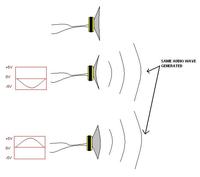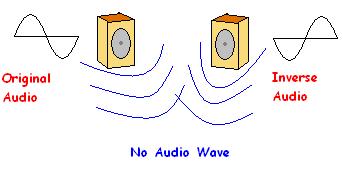umery2k75
Advanced Member level 1
Just to give you a brush up on the working of speaker, I included this animation from how stuff works.
**broken link removed**
[Note] You need to have Adobe Flash Player 9 to see the animation, its free and can be downloaded.
Anywayz.I made a low power amplifier made around LM324 driven by +12 and -12V, I was driving a 8 Ohms Speaker with it.I used my Computer Audio Port and I played the song in my computer, then I amplified this signal with the LM324 with non-inverting amplifier and I was able to hear the Audio song on my 8Ohms speaker and I was also able to turn the Voice volume up and down by changing the gain of the non-inverting amplfier.All was good.
But I thought of making an inverting amplifier, as the output voltage would be 180' out of phase with the input voltage(Original audio). What would the voice be like? This was the question, which invoked me at first.
Then I made the inverting amplifier and I played the audio song which was 180' out of phase with the original audio song coming from the computer, the audio song was the same. There wasn't any difference at all. I was surprised, as why did this happen. This time the speaker was working differently.

Negative voltages implication means the speaker contracts from it's normal position and Positive voltages implication means the speaker expands from it's normal position.
If I get the same audio voice from the speaker, is this means the sound wave that is generated is same, whether it's made from condensation or rarefaction of air molecules.
Please have your say on that.
**broken link removed**
[Note] You need to have Adobe Flash Player 9 to see the animation, its free and can be downloaded.
Anywayz.I made a low power amplifier made around LM324 driven by +12 and -12V, I was driving a 8 Ohms Speaker with it.I used my Computer Audio Port and I played the song in my computer, then I amplified this signal with the LM324 with non-inverting amplifier and I was able to hear the Audio song on my 8Ohms speaker and I was also able to turn the Voice volume up and down by changing the gain of the non-inverting amplfier.All was good.
But I thought of making an inverting amplifier, as the output voltage would be 180' out of phase with the input voltage(Original audio). What would the voice be like? This was the question, which invoked me at first.
Then I made the inverting amplifier and I played the audio song which was 180' out of phase with the original audio song coming from the computer, the audio song was the same. There wasn't any difference at all. I was surprised, as why did this happen. This time the speaker was working differently.

Negative voltages implication means the speaker contracts from it's normal position and Positive voltages implication means the speaker expands from it's normal position.
If I get the same audio voice from the speaker, is this means the sound wave that is generated is same, whether it's made from condensation or rarefaction of air molecules.
Please have your say on that.

